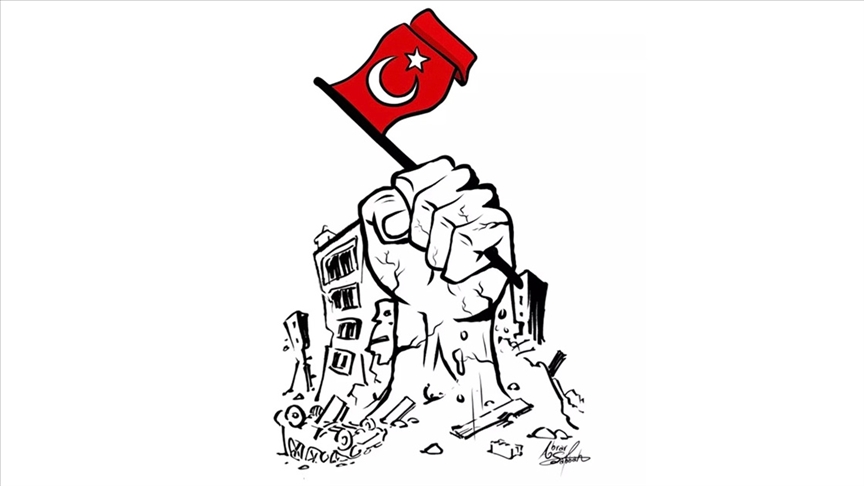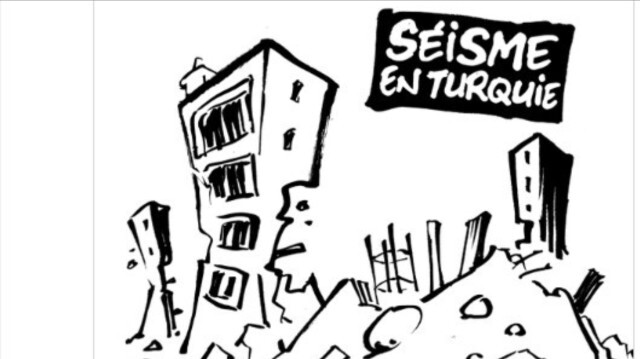The emigration was a very important incident enabling the Prophet (pbuh) to fulfill his duties of prophethood under better conditions and assisting the spread of Islam. The greatest goal of the last prophet was to convey the verses of the Holy Quran, to teach the religion while practicing it himself, and to increase the number of believers, thus enabling the transmission of the religion to future generations without any changes. Thus, he decided to make certain arrangements and take precautions. He persuaded the Muslims to become good worshippers and earn the approval of Allah, to perform activities that would create social solidarity and inner unity among the believers and he presented commands and recommendations for them. Within this context, the Prophet commanded that people should greet one another, that they should protect the poor, that they should not neglect visiting relatives and that they should wake up for prayer during the night when others are still sleeping, promising heaven for those who do so.
First of all, the people of the period needed a mosque that would be the center of Muslim society. In the Meccan period people had very limited opportunities to worship together or to listen to to Prophet Muhammad. When the number of Muslims increased, particularly after the First Aqabah Pledge, As'ad ibn Zurara built a masjid near to where the dates where dried, with the qiblah (the direction in which Muslims pray) being in the direction of Jerusalem. Later al-Masjid al-Nabawi was built on this location. In the meantime, the Muslims in Mecca were not performing Friday prayers while the Muslims were performing it in Medina. The Prophet decided to build a mosque near the place where his camel had sat on the ground. He bought the land, which belonged to two orphan children whose names were Sahl and Suhayl. During the construction of al-Masjid al-Nabawi, which lasted about seven months, the Prophet stayed in Abu Ayyub al-Ansari's house and met with men from Medina there, and with the women in another house. Al-Masjid al-Nabawi is one of the two masjids built on the order of the Prophet (the other being Quba), and its kiblah faced Jerusalem. In accordance with the verses sent in the sixteenth or seventeenth month after the hijrah (Al-Baqarah, 149-150), prayers that had been performed facing Jerusalem were re-directed towards the Kaaba.
Al-Masjid al-Nabawi was first and foremost a place of worship. In the Age of Happiness, it became the center of nearly all of the Prophet's activities especially education. In al-Masjid al-Nabawi, political and military developments were discussed and various decisions were taken; the wounded were treated; prisoners of war and criminals were held in custody; the bounty won during battles were kept; delegations of Muslim tribes, emissaries and guests were accommodated; judicial trials were conducted; marriages were announced; various demonstrations and ceremonies were held. The Prophet was fulfilling all the requirements of his duties in the masjid and his house, which was next to the masjid, and he was conveying and teaching the verses of the Holy Quran which had been sent there. The Prophet built a veranda behind the al-Masjid al-Nabawi for homeless Muslims and Companions who wanted to study, known as the Suffa; the roof was made of date leafs. People who took shelter here or studied here were called the Ahl al-Suffa or Ashab al-Suffa. The Prophet chose people from the Ahl al-Suffa when creating advisory committees or diplomatic committees.
Just after the emigration, the Prophet announced that every immigrant (muhajir) was a brother or sister to someone from the Aws tribe or Khazraj tribe that is the residents of Medina. With this directive, known as the Muahat, the unification of the Islamic society was greatly enabled, and material and psychological needs were provided for the muhajirs, who had left their all possessions in Mecca. The Muslims of Medina accepted the muhajirs as their siblings and shared their homes with them in accordance with the promise they had given to Prophet Muhammad during the pledges of Aqaba. The people of Medina wanted to share their property rights, date fields, and other properties with the muhajirs and the muhajirs thanked them for this noble attitude, but refused this offer. The Prophet stated that the muhajirs could have a share of the products of their effort, on the condition that the property remained with the people of Medina. In this way, the income that was gained by working together was shared. This cooperation between the Muslims of Medina and the muhajirs was praised in the Holy Quran in the following words: "Undoubtedly, those who believed and left their hearth and homes for Allah and fought with their wealth and their lives in the way of Allah, and those who gave shelter and helped they are heirs one of another" (Al-Anfal, 8/72). However, after the Battle of Badr, "And those who believed afterwards and emigrated and waged the holy war with you, they also are of you. And the blood relations are nearer to one another in the Book of Allah. Undoubtedly Allah knows all things" (Al-Anfal, 8/75). By forming the above-mentioned bond of brotherhood, the Prophet not only provided for the needs of the muhajirs, but also created a bond of religion that took the place of the bonds of tribes. Except for the inheritance law, the provisions of the muahat, such as assisting one another, cooperating, and advising each other remained valid. In this way, the muahat tradition was generalized and it was announced that: "Muslims are brothers, therefore make peace between the two brothers and fear Allah that mercy may be shown to you" (Al-Hujurat, 49/10).
Emigration to Medina continued during the period up until the conquest of Mecca. In the early years of Medina, the Prophet told people who came from areas surrounding Mecca and Medina that they should immigrate to Medina. The Prophet did not approve of the people who left Medina after having immigrated there, and he prayed to Allah that the emigration become permanent. With the responsibility of being the last prophet, the Prophet wanted to lay the necessary foundations for a large community to learn the religion that he was conveying through practice, to pass on the religion to the future generations accurately, and to preserve the religion until judgment day without change or corruption. As a matter of fact, the Prophet's efforts ore fruit and the Muslims, whose numbers increased day by day, achieved political success and military victories against their enemies. When the victories of the Muslims eventually were crowned with the conquest of Mecca in the 8th year after the emigration (630), the Prophet said: "There is no immigration after the conquest of Mecca" (Tirmidhi, "Siyar", 33). With these words, the Prophet removed the necessity of immigrating to Medina, but he wanted the people outside the city to still join in any war when they were called to do so.
There was no organized state in Mecca, or in the entire Hejaz region, and every tribe lived under the rule of its own tribal leader. In Medina the Aws tribe, the Khazraj tribe, and three Jewish tribes (the Banu Qaynuqa, Banu Nadir and Banu Qurayza) lived. The date when the Jewish tribes came to the city is not exactly known. It is known that the Aws tribe and the Khazraj were constantly in conflict with each other, and that some Jewish people took sides with the Aws and some with the Khazraj. There was no executive structure that involved all the people of the city. After achieving brotherhood among Muslims with the muahat, the Prophet called representatives of the Arabs who were not Muslims, the Muslims and the Jewish tribes in Medina to Anas ibn Malik's house to discuss how they could live in the city in peace and safety. The Prophet persuaded all the groups to form a city state, and he formed a written text based upon the issues agreed upon there. In this agreement, which is mentioned in the sources as a "book" or "page", and which has been defined as the "first written constitution" by some scholars, such issues as providing domestic peace in the city, preventing possible external threats, determining the judicial authority to resolve legal conflicts between individuals, and determining some economic principles. It was a particular condition that the Jews would cooperate with the Muslims if there were external threats to Medina and that they would not cooperate with the Quraishis. It was decided that every group would cover financial issues, like cost of war and ransom or blood money, and that they would conduct judicial duties among themselves independently; Prophet Muhammad was to be the ultimate judicial body in resolving conflicts between people from different groups. It was also stated that the Jews and the Muslims had freedom of religion and freedom of conscience. In accordance with the article which asserted that "Medina will be a sanctuary for the people of this pact", Prophet Muhammad assigned Ka'b ibn Malik to determine the borders of Medina, with the al-Masjid al-Nabawi being the center. The political and military activities were conducted in line with these borders thereafter. The Prophet built a market place in Medina for the Muslim people, and he allocated the Baki spot as the burial ground. In this way, he drew up the first example of a city plan that would later become a model in the Islamic world, including the house of an amr (ruler), market place, graveyard, districts and a mosque in the center.
One of the regulations actualized in the first year of the hijrah (Gregorian 622) is the using of the adhan to notify the Muslims about the times of prayer. It is also accounted that the adhan was first used in the second year after the hijrah (Gregorian 623). The prayer was commanded during the Mecca period, but no method of how to notify the times for prayer was thought of until after Prophet Muhammad immigrated to Medina. Actually, the conditions in the Meccan period were not suitable for any such method. However, the Muslims in Medina had an environment in which they could openly perform their worship, and their numbers were increasing daily. The Prophet discussed with his Companions what could be done to notify Muslims of the prayer times to enable them to know the correct times. Many opinions were set forth in the talk and no agreement was reached. According to one account, Abdullah ibn Zayd ibn Sa'laba was taught the adhan in his dream and he notified Prophet Muhammad about this incident. Prophet Muhammad wanted Abdullah to teach the words of the adhan to Bilal al-Habashi, who had a loud voice. Bilal al-Habashi went on the roof of a high house and called the morning adhan. Later on, a special place was built behind the al-Masjid al-Nabawi for calling the adhan. Consequently, the adhan became the distinct feature of Islam and a symbol of Muslim presence. The adhan is still called all over the world today at all times of the day to call people to worship Allah.
Subscribe to:
Post Comments (Atom)









No comments:
Post a Comment